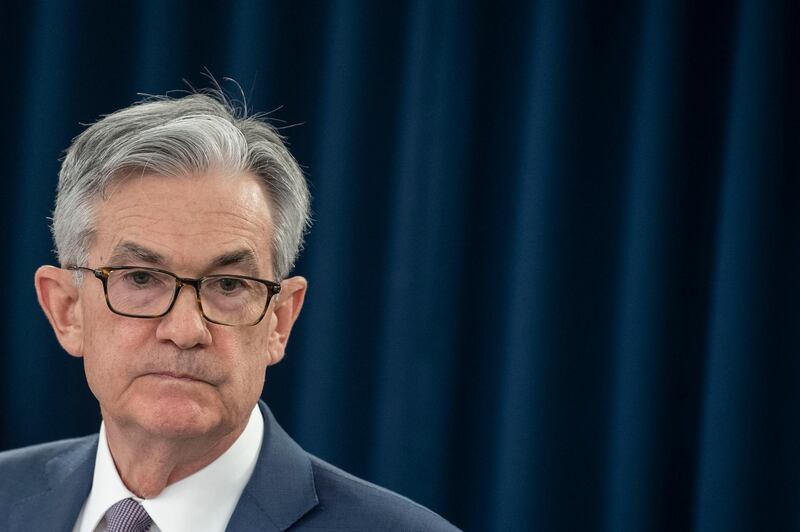The coronavirus pandemic is giving birth to a new doctrine in central banking. What matters most isn't transparency or forecasts, but the ability to move quickly.
One of the big themes coming out of the global financial crisis was the idea that central banks should flood the market with information — be it dot plots, forward guidance, statements, interviews or tweets. The Federal Reserve was a leader in developing that paradigm, varying degrees of which were adopted throughout the world. The challenge is that, in a crisis, monetary authorities must be able to move swiftly, without being hemmed in by their previous messaging. While actions of the past few days have been decisive, weeks passed with mixed messages.
Now the Fed, which slashed rates close to zero late on Sunday as part of a dramatic series of steps to shore up the economy and the broader financial system, may be dismantling the very system it created. Within hours, central banks in Australia and New Zealand responded with radical measures of their own that flew in the face of the relative policy calm projected fairly recently.
The Bank of Japan, which brought forward to Monday a policy meeting scheduled for later this week, increased its purchases of exchange-traded funds and introduced a new lending program. Japan had been adding liquidity to markets, but with official rates already negative, many considered the central bank more constrained. Indeed, the BOJ kept its main rate at -0.1 per cent and kept its target for the 10-year bond at about zero.These early demonstrations of resolve — with little regard to previous signalling — speak not only to the rapidly evolving Covid-19 outbreak, but the need for an overhaul of central bank communication. There was no indication at many recent policy meetings that such steps were necessary, let alone contemplated. Fair enough; few could have predicted how quickly the coronavirus would upend considered forecasts and carefully-calibrated trajectories of borrowing costs. The emergency steps we’re seeing now are a healthy corrective.
Investors are taking note.
“We consider it unwise to hold central banks to their prior communications in fast-moving markets where economic conditions and prospects are deteriorating rapidly,” said Andrew Ticehurst, a rate strategist at Nomura Holdings in Sydney. Benchmark US Treasury yields slumped as much as 30 basis points on Monday morning as equity futures tumbled.
In a conference call with reporters on Sunday, Fed chairman Jerome Powell was asked whether he’d be releasing the Fed’s economic forecasts. Technically, they were due at the Fed’s March meeting later this week, which had been moved forward. Mr Powell said there wasn't much point in submitting estimates that could be quickly overcome by events, and that they may even become an obstacle. If the Summary of Economic Projections returns at all, it should be highly conditional. The Fed probably needs to emphasise the numbers are little more than a best guess.
This might all seem fairly arcane when thousands are dying and economic life on the planet faces serious challenges. But as the first line of defence, central banks’ responses are greatly consequential. Remember that monetary policy can be enacted faster and with less mess than fiscal policy, which tends to involve legislative trade-offs. The approach to the former is essentially being reinvented on the fly.
Little more than a month ago, the Reserve Bank of Australia was pretty sanguine about its outlook, noting the economy had gently turned the corner. Then it cut rates on March 3. On Monday, its governor Philip Lowe effectively pre-announced quantitative easing, saying the RBA is ready to purchase bonds to ensure markets function smoothly, and promised further steps would come on Thursday. While economists had speculated that QE was an option down the line, it arrived sooner than anyone dared to think. Neighbouring New Zealand enacted an emergency rate reduction on Monday and is working to have a QE programme ready should it be needed. As we can see, the virus has radically compressed the timeline for decision making.
I'm not advocating a return to the time when central bank bosses could raise an eyebrow or mumble a tortured phrase and the earth would shake. There's too much public scrutiny for that. But Mr Powell could be forgiven for looking with some nostalgia upon the tenure of Alan Greenspan, who led the Fed from 1987 to 2006. Statements then were brief, there were no press conferences, and there was little need for the Fed to explain — let alone justify — its actions. In his 2018 address at Jackson Hole, Mr Powell lauded Greenspan's approach to risk management.
When Mr Powell delivered that speech, it felt like he was thumbing through sepia-tinged photos from an ancestor’s album. It seems other officials are also starting to reminisce.
Bloomberg







